La Brea Fire Proves Almost Impossible to Contain
View from the West Side Shows a Fire Totally Out of Control

From my perch atop the Tepusquet ridge not too far from the Colson Canyon Quarry I could see why La Brea Fire is so difficult to fight. In spite of the fact that the flames had pushed out of the San Rafael Wilderness and toward forest roads and dozer lines in La Brea Canyon, the fire swarmed over every hill and canyon, eating up the mountains like a swarm of army ants.

By noon, the fire had breached the ridgetop near Pine Canyon on the northwest side of the fire, burning down into the upper parts of the canyon, chewing up an additional thousand acres, and forcing the Sheriff’s Department to initiate a mandatory evacuation of the Tepusquet Canyon area.
Directly below me is Bear Canyon, a tributary of La Brea Canyon. While the big bombers paint the hillsides near me with red, gooey fire retardant in preparation for a backfire later that night, I spot a few helicopters heading down canyon, their task of holding off the advancing flames almost impossible.
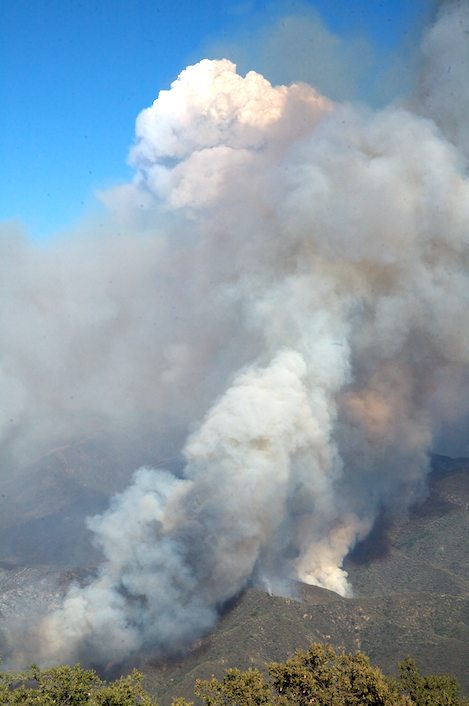
The pattern is an interesting one. As the wind blows in a southeast direction, the fire continues to advance against it, something that you wouldn’t think possible. Yet the fire’s leading edge has moved at least two miles in our direction today, despite the head wind, and in some areas twice as far.
One reason for this is the sneaky and persistent way the fire snakes through the maze of small canyons and side drainages, slowly moving downhill into the wind, often diagonally, almost like a sailboat tacking at an angle cross the wind’s path. Once the fire establishes itself down in the recesses formed by the canyons and draws – protected somewhat from the wind that is whistling overhead – the fire will flare up, move rapidly uphill, and then sail diagonally over toward the next set of hills.
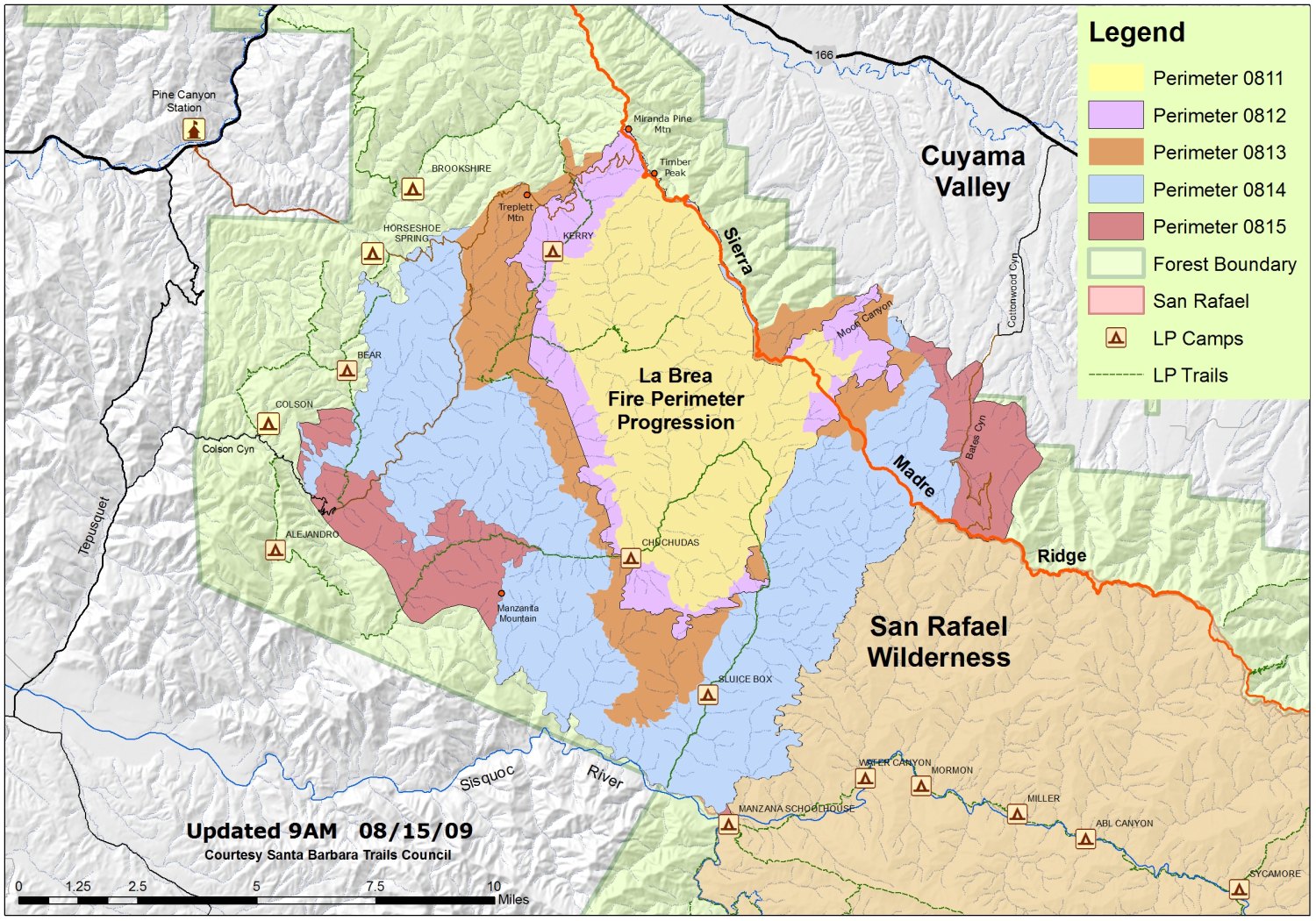
I make my way back down Colson Canyon to Tepusquet and then north to Highway 166 and head up Pine Canyon Road to survey the effects from earlier in the day’s slop over into the canyon. In the lower canyon the Hot Shot, engine, and CDF crews are beginning preparations for dinner, exhausted from holding off the fire down here in Pine Canyon. Not too far past their resting spots, just past the turnoff to Brookshire Camp, I enter the burned area.
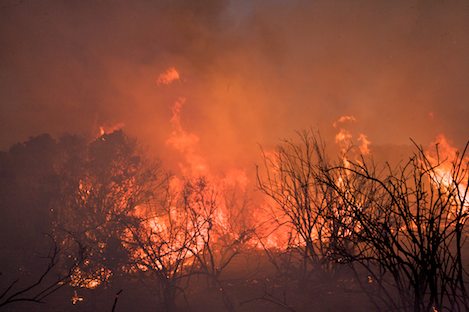
The whole upper part of Pine Canyon has been burned out and the hillsides are still smoldering. Pockets of fire are still attacking small stands of chaparral that have gotten left behind when the front blew through, and high on the ridge another huge cumulus cloud is building.
At the crest of Pine Canyon I’m confronted with a landscape almost totally devoid of vegetation. Just five days ago I’d stood with firefighters at Miranda Pine Mountain watching the fire make a run toward the Sierra Madres, well to the east. Today, four days later, the fire has not only moved back west and past Miranda Pine but has pretty much blown through all of La Brea Canyon and is on its way toward the Sisquoc.
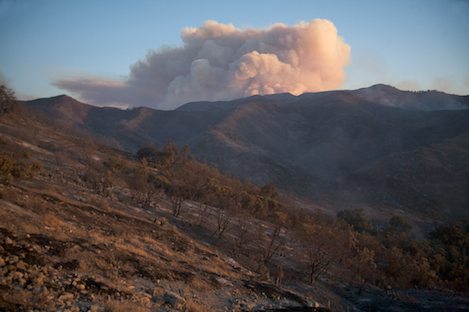
A few days ago this was just a wilderness fire, too far away to be a concern, and threatened little. Today firefighters are busy making every effort to hold the Tepusquet ridge. Over the past few days, Incident Command has had the luxury of a number of contingency firebreaks between the fire and a final line in front of the homes in Tepusquet Canyon. But no longer.
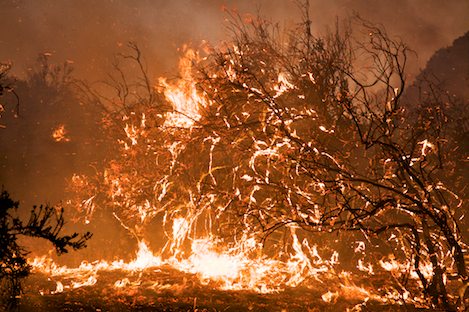
On my way back down Pine Canyon I’m stopped constantly by a parade of engine crews moving up the road to join this final effort to hold the ridge; some work tonight, when they backfire, and others will tomorrow in the early a.m.
There are more than a hundred engines in Pine Canyon alone, their crews enjoying the quiet tonight but readying themselves for a last stand on Tepusquet ridge tomorrow.



